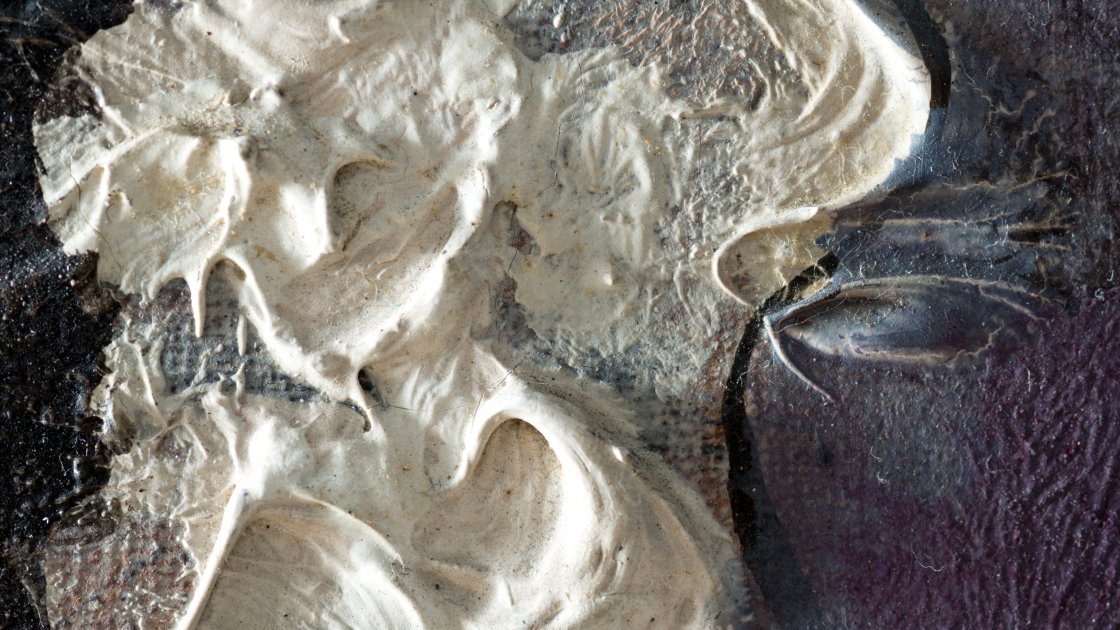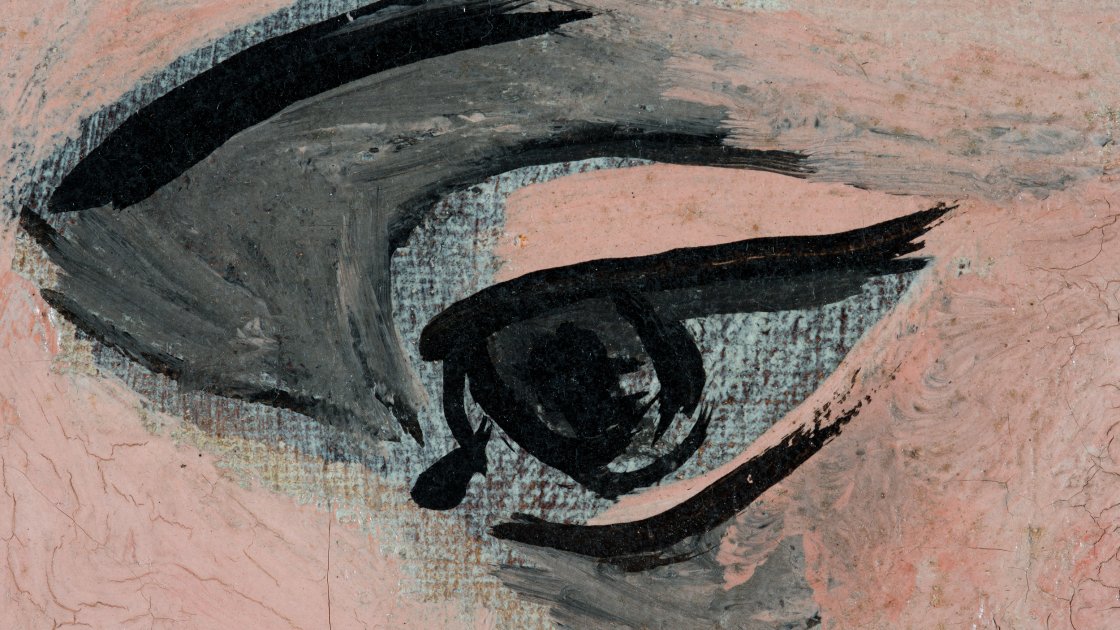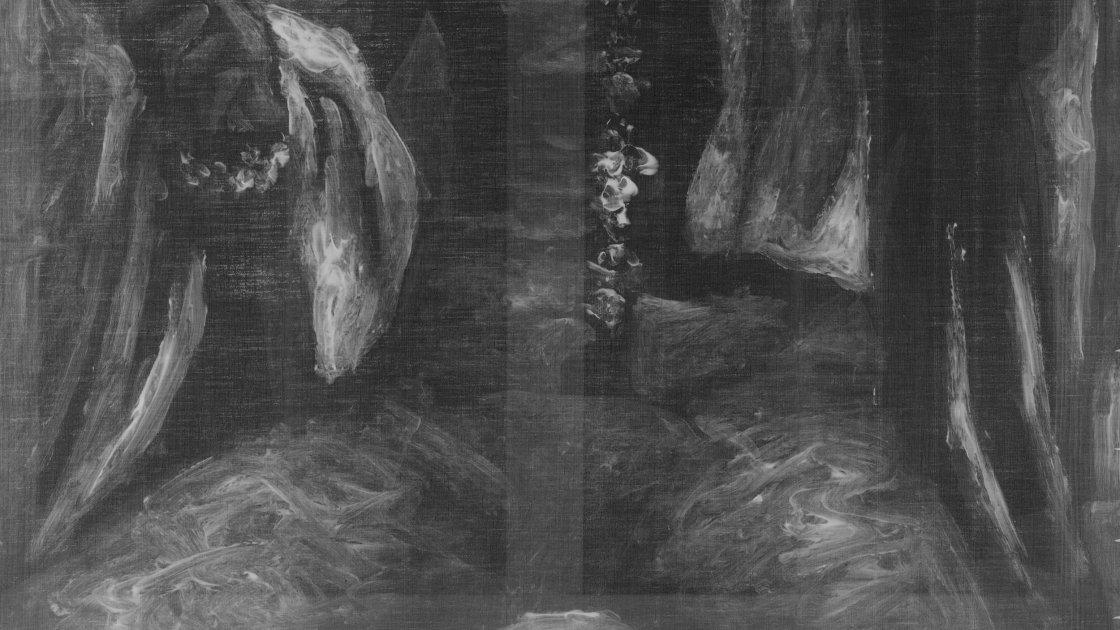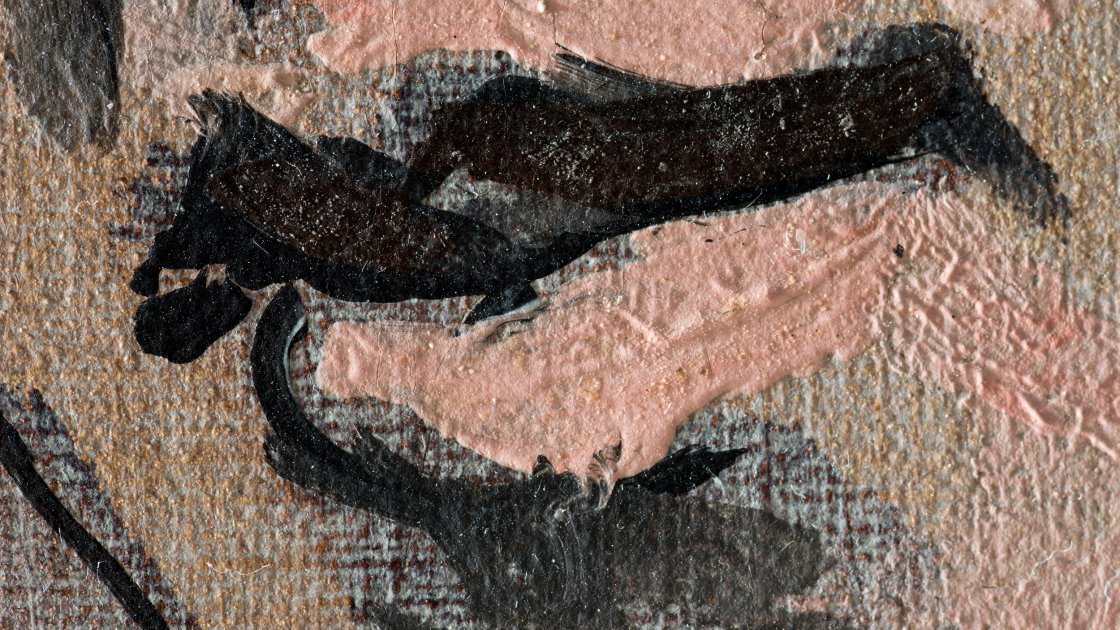Technical studies and special display
To mark the 25th anniversary of the Thyssen-Bornemisza Museum, the Restoration Department are pleased to present the results and conclusions of their technical study of an iconic work in the collection: Harlequin with a Mirror, by Pablo Ruiz Picasso.
The aims of this project were to demonstrate the most interesting aspects of the creative process behind this painting, shed light on how it was conceived and in this way gain an insight into how the artist worked.
The analysis consisted in applying the different study methods commonly used in museum laboratories: X-ray, infrared reflectography, analysis of the materials used by the author, and detailed photographs of every aspect analysed. Using this methodology, we set out to determine the technique employed, the composition of the materials, their distribution in the different layers, and the variations and rectifications which the Málaga-born master included in his creative process.
Hidden composition
The X-ray study (RX) yields valuable information about the details not visible to the viewer, revealing aspects of the pictorial technique the artist used as well as the composition and material history of the painting.
Close examination of the radiographic image shows how Picasso used white to situate the figure and loose, swift strokes of his brush to sketch in the rest of the composition. In this preliminary phase he conceived the Harlequin with open legs, creating a robust, balanced figure. The change he subsequently made, turning the left leg inwards, lent the final figure a certain instability and movement. This foreshortening is imperceptible in the X-ray due to the materials used.
The X-rays confirm how Picasso used paint to create a preparatory sketch and then employed planes of colour, the legacy of his Cubist period, to gradually cover and tone down the vibrant brush strokes in his initial more naturalistic composition.
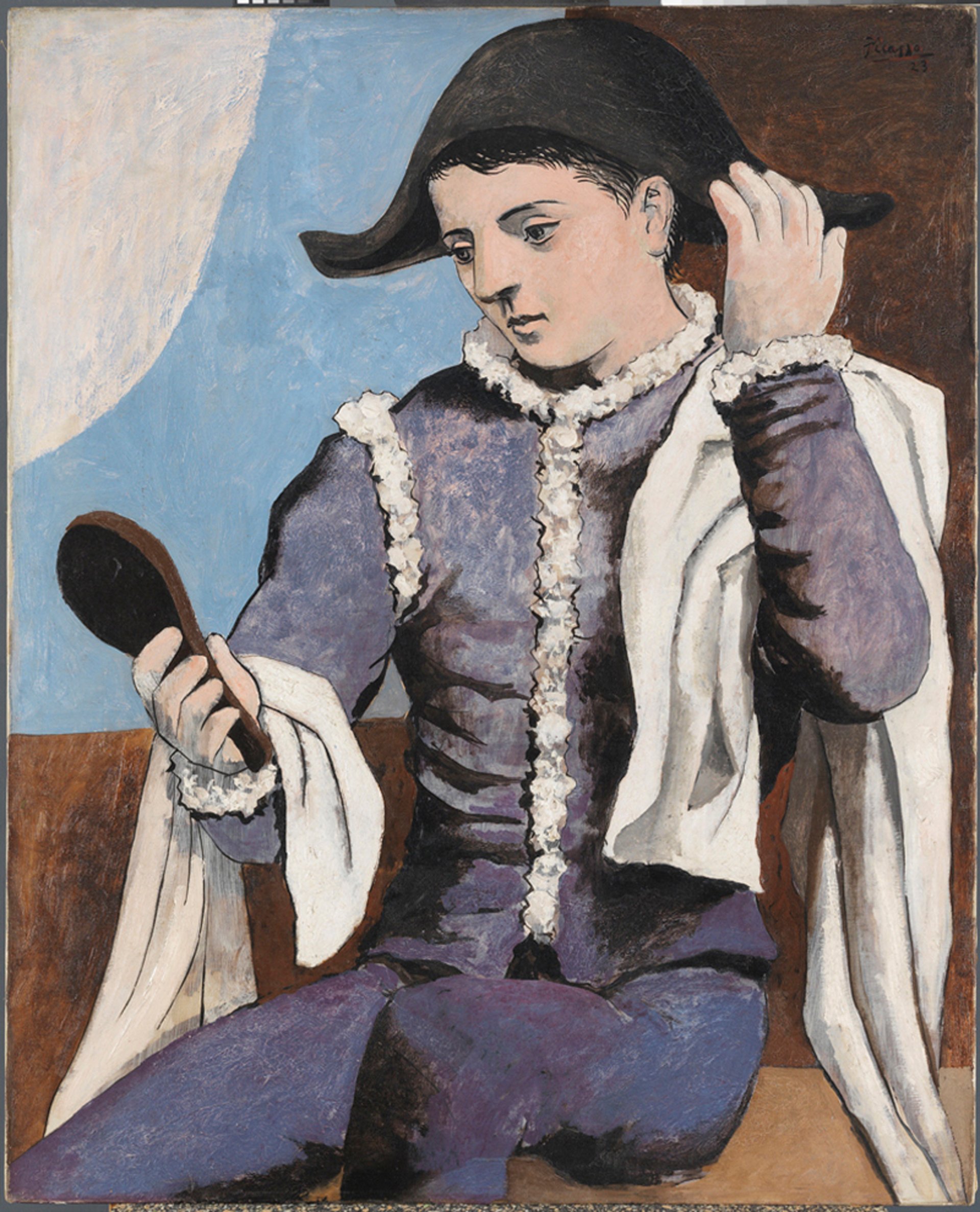
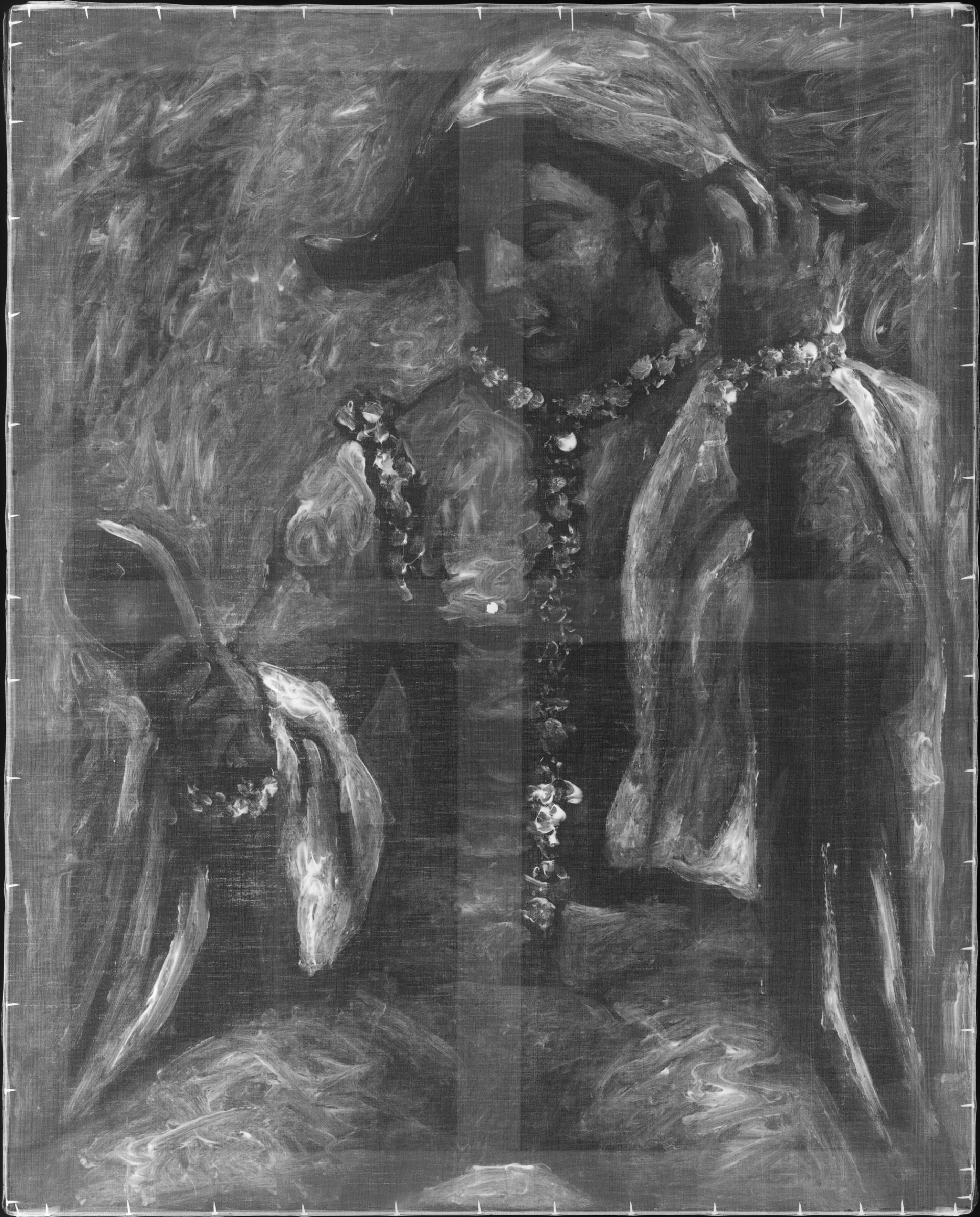
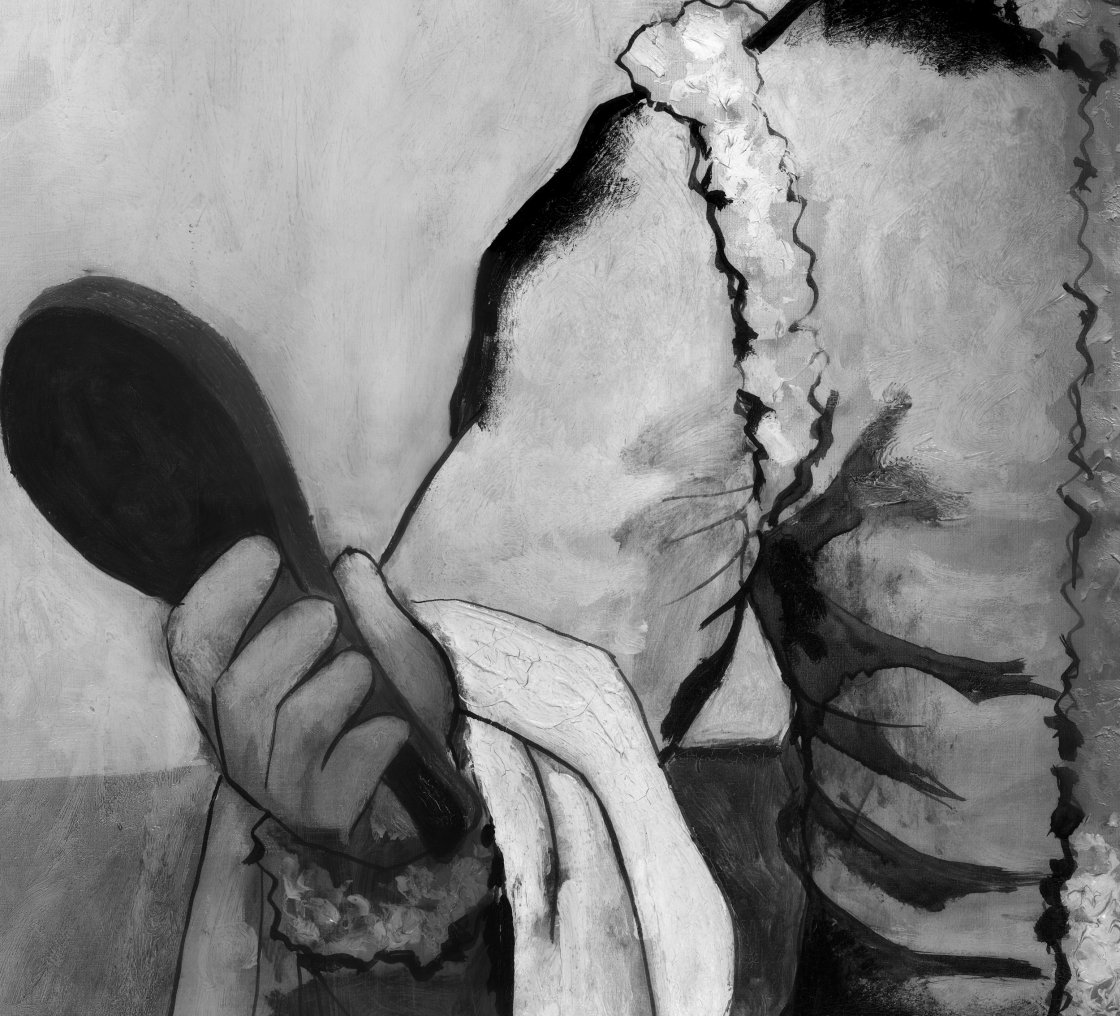
The preparatory drawing
Infrared radiation reveals hidden details underneath the layers of colour visible to the naked eye. For example, depending on the material conditions, it enables us to visualise the artist's preparatory drawings.
Picasso sketched with his paintbrush on a whitish background, rapidly outlining the shapes. The close match between the strokes in the initial preparatory drawing and those of the subsequent reinforced drawing in which he defined the figure (except in certain areas such as the folds in the clothes, the arm and the legs) indicates a very confident hand, which is one of the most recognisable characteristics of this great artist.


